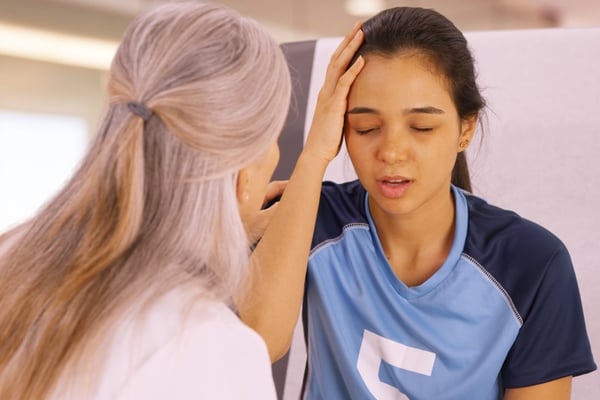
Have you or someone close to you experienced a concussion recently? Don’t know what concussion information to believe? You are not the only one! Doing your own research can be hard, so here are 6 concussion myths we have debunked for you.
Myth #1: You need to lose consciousness to have a concussion
Loss of consciousness only happens around 10% of the time when a concussion occurs (when this happens, medical attention is required). However, remaining conscious does not mean you are in the clear. For example, feeling “out of it” or as if you had your “bell rung” may be signs a concussion has occurred. If you are experiencing symptoms such as headaches, issues with memory, irritability, difficulty with bright lights, nervousness, or changes in sleep shortly after an incident has occurred, you may suspect a concussion. A more thorough list of symptoms associated with concussions can be found in this blog.
Myth #2: A concussion only occurs when you hit your head
Often people think that there must be a blow to the head for a concussion – but that is not the case. Concussions may result from any action that causes the head to move quickly and forcefully in a multitude of directions. In fact, the most common cause of concussion is from the sudden jolting motion that is generated from a motor vehicle accident or fall – not direct blows to the head. This quick motion may lead to stretching and bruising of nerves and blood vessels, which creates chemical changes in the brain that temporarily disrupt normal brain function.
Myth #3: “I need to rest in a dark room until I am completely better”
Following a concussion, resting is okay for up to 48 hours; however, after that, light activity is recommended. This means that doing small chores around the house or easy mental tasks can help your recovery. In the past, complete physical and cognitive rest in a dark room was recommended. With more research, it has been shown that light levels of activity early on with a gradual increase throughout the recovery helps to decrease the chance of persistent post-concussive symptoms. For more guidance or support about what level of physical activity is recommended for you, consult a pt Health clinician.
Myth #4: “I can’t get a concussion if I wear a helmet!”
Helmets should always be worn in recommended sports and activities. However, while helmets help with cushioning of a blow to the head, it will not stop the brain from moving around inside the skull. Therefore, wearing a helmet does not protect you from getting a concussion. Helmets are designed to prevent major skull injuries (e.g., broken skull bones), therefore, if there is any force directed towards the head, the helmet will help cushion the impact on the skull.
Myth #5: “If there are no concussion symptoms right after a sports-related incident, it means I am 100% safe to continue playing”
If there is any suspicion of a concussion, the athlete should be removed from play to be immediately assessed by a designated healthcare professional. Even if the athlete seems fine at the time, they should continue to sit out from play and be re-assessed over the first few hours after the incident. This is due to the evolving and sometimes delayed nature of concussion symptoms. Based on their assessments, the healthcare professional will determine the best next steps.
Myth #6: It takes a long time to recover from concussions
Most concussion symptoms resolve quickly with little to no intervention. Adults typically recover within 7-14 days and children generally take a bit longer to recover, with most children recovering within 4 weeks. However, the length of recovery can vary from person to person. Doing the right things early on can help with a shorter and more complete recovery. Therefore, it is important to follow guidelines set by your healthcare provider.
If you or someone you know is dealing with a concussion, a pt Health clinician can help. Find a clinic near you to schedule an assessment.
This blog originally appeared on Lifemark.ca and was written by Aimee Chin-A-Young and Sophie Fu, physiotherapy students at the University of Toronto.
